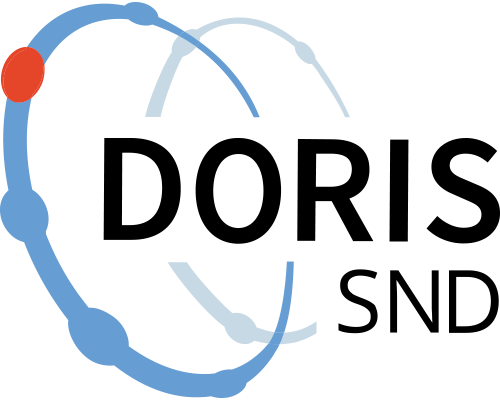Reflection seismic study of the post-glacial Burträsk fault: Shot gathers with geometry
https://doi.org/10.5878/g1mw-0h64
In 2008, a 22 km long high resolution reflection seismic profile was acquired over the Burträsk fault in Northern Sweden. The Burträsk fault formed at the end of the last glacial, triggered by the rapid melting of the Scandinavian ice sheet and the following crustal rebound. The aim of the survey was to image the structure of the fault with depth. The profile followed existing roads resulting in a very crooked acquisition geometry. A list of the key acquisition parameters is given below.
The dataset was first processed and published in 2011. In 2018, the dataset was reprocessed using an additional cross-dip correction step to improve the imaging of reflection with a dip component in the cross-profile direction. The following data files are available for downloading:
1) raw shot gathers (decoded and quality controlled, with geometry information in the headers)
2) original stacked section from Juhlin and Lund (2011)
3) cross-dip corrected stacked section from Beckel and Juhlin (2019)
4) cross-dip corrected migrated section from Beckel and Juhlin (2019)
A short summary of the main processing steps for each dataset is given below. For a complete description, please refer to the above mentioned publications.
Key acquisition parameters:
Number of channels: 280
Near offset: 0 m
Geophone spacing: 20 m
Geophone type : 28 Hz single
Nominal source spacing : 20 m
Source type : VIBSIST
Hit interval between hammer blows : 100-200 ms
Sweeps per source point :3-4
Nominal fold : 140
Recording instrument : SERCEL 408L
Sample rate : 1ms
Field low cut : Out
Field high cut : 400 Hz
Record length : 23 s
Profile length : 22 km
Source points : 799
Dates acquired: 2008/08/05-2008/08/16
Short summary of the main processing steps:
1) BUR_shots_geom.sgy
The raw shot records are pre-processed with VIBSIST decoding, quality control. Information about the shot and receiver geometry has been added to the trace headers.
2) BUR_original_stack.sgy
The processing flow of the original data stack includes trace editing and balancing, spectral equalization, time-variant bandpass filtering, refraction and residual statics, horizontal median filtering, NMO correction, DMO correction, stacking and coherency filtering (for a complete description see Juhlin & Lund, 2011)
3) BUR_crossdip_stack.sgy
The main processing steps of the crossdip stack are very similar to those of the original stack, including trace editing and balancing, spectral equalization, time-variant bandpass filtering, refraction and residual statics, horizontal median filtering, NMO correction, DMO correction, stacking and coherency filtering. Before DMO correction, an additional cross-dip correction step has been added. For a complete description see Beckel & Juhlin, 2019.
4) BUR_crossdip_mig.sgy
The processing flow of the migrated section includes trace editing and balancing, spectral equalization, time-variant bandpass filtering, refraction and residual statics, horizontal median filtering, NMO correction, cross-dip correction, DMO correction, stacking, coherency filtering and migration (for a complete description see Beckel & Juhlin, 2019).
This dataset contains the pre-processed shot gathers of the Burträsk profile.
Processing steps for this data set:
1: Read decoded VIBSIST data
2: Bulk static shift to zero time
3: Apply geometry
Processed seismic data stored as one file for the entire seismic profile, according to SEG technical standard SEG-Y revision 1 (SEG-Y_r1.0, 2002); https://seg.org/Publications/SEG-Technical-StandardsOpens in a new tab
Access data by contacting request@snd.gu.seOpens in a new tab or by using the web form.
Data files
Data files
Citation and access
Citation and access
Data access level:
Creator/Principal investigator(s):
- Björn Lund - Uppsala University - Department of Earth Sciences
Research principal:
Citation:
Language:
Method and outcome
Method and outcome
Data collection
Data collection
Geographic coverage
Geographic coverage
Administrative information
Administrative information
Topic and keywords
Topic and keywords
Relations
Relations
Publications
Publications
Metadata
Metadata
Version 1.0
